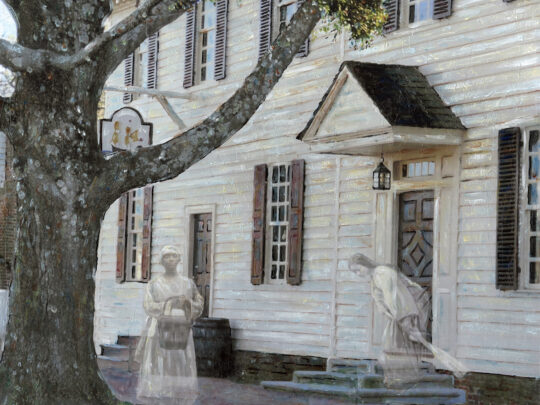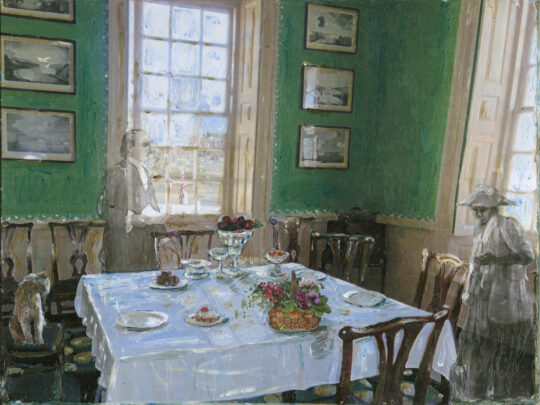Prints
FOOTSTEPS FROM THE PAST
Notes On The Collection
Colonial Williamsburg is a town that tells the story of the development of a new nation; with a past that demonstrates how brilliantly we crafted our democratic, free nation. Ironically, it also exposes a history of our ancestors' dependence on slavery, indentured servants, and hardworking laborers to advance early economic development. All longed for freedom in the new world—it would take longer for some than others to achieve this goal. According to Colonial Williamsburg Foundation historical data, more than half of Williamsburg's population in 1775 consisted of slaves. Houses and shops depicting the early colonial period line Duke of Gloucester Street. Alongside the buildings, the colonial reenactment role players and the tourists, it is almost possible to glimpse the life-forces of the original settlers. Their stories line the streets and walkways along the crushed seashell paths running beside the yards and behind the shops.
When my children were small, we played an imaginary game when we were out walking in remote areas. I would tell them to imagine what it would feel like if we turned the next bend in the dusty dirt road and came upon a small town from long ago. This innocent self-deception allowed us to be transported in time to the past and they would talk excitedly, pointing out envisioned details that they believed were undoubtedly from earlier periods. I recall vividly the day I was walking down Duke of Gloucester Street and for a moment seemed to glimpse the fleeting shape of a woman bent over sweeping a step leading into a shop. The image faded quickly, but similar historical images conducting their daily tasks were visualized in other places throughout town.
Passing by Bruton Parish Church, I imagined early colonists—a dignified black couple waiting on a bench outside the church, which was segregated in the early colonial period. Elsewhere in town, two older friends help carry a basket, containing ingredients they will use to prepare a meal for the merchant they served. Elegant tables were arranged with pastries and specially prepared dishes for early political figures, but the leftovers were cleared away by silent figures waiting in the background. In every corner of Colonial Williamsburg that I explored, the architecture and design of the colonial period brought to life ephemeral images of the original hardworking and adventurous settlers in whose footsteps I walked. This became the subject of a series of paintings called Footsteps from the Past. By depicting these scenes on canvas, I hope to contribute to the historical effort to keep alive the hopes and dreams—and daily struggles—of our ancestors.
The Footsteps from the Past series focuses on everyday life in colonial Williamsburg in the earliest days of our country. Particular emphasis is given to the presence and role of the servants and slaves whose labors provided an essential foundation to southern society during that era. While students of history are well aware of the inhumane condition in which the slave population lived, this series highlights the humanity and indomitable spirit of the early American settlers in Colonial Virginia.








